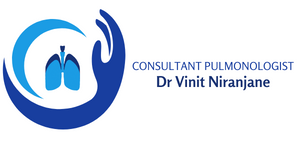Lung cancer can be a frightening diagnosis, but knowledge is power. As a pulmonologist who has dedicated my career to treating this disease, I’m here to guide you through the basics and offer hope.
What is lung cancer?
Lung cancer is a disease where abnormal cells grow uncontrollably in the lungs, often forming tumors. These tumors can interfere with normal lung function, leading to symptoms like persistent cough, chest pain, and difficulty breathing
Types of lung cancer:
Small Cell Lung Cancer (SCLC) is an aggressive form of lung cancer characterized by rapid, uncontrolled cell growth. Despite its quick progression, SCLC often responds positively to treatment, particularly chemotherapy. This cancer type is initially highly responsive to cytotoxic therapies, with up to 25% of early-stage patients achieving long-term control of the disease.
Non-Small Cell Lung Cancer (NSCLC) is a prevalent type that tends to grow more slowly than small cell lung cancer. With various treatment options such as surgery, chemotherapy, radiotherapy, targeted therapy, and immunotherapy, NSCLC offers a broader range of interventions, allowing for personalized approaches tailored to individual patient needs and characteristics.
What causes it?
- Smoking: The biggest risk factor.
- Smoking is the predominant risk factor for lung cancer in India, especially among men. The principal culprits are cigarettes and beedis. Data suggests that tobacco use, primarily smoking, contributes significantly to lung cancer incidence. In Indian men, smoking tobacco is the leading cause of lung cancer. However, among Indian women, the scenario might be influenced by other factors.
- Data indicates a high smoker to non-smoker ratio, reaching up to 20:1 in various studies in India. This emphasizes the substantial impact of smoking on lung cancer cases. It’s crucial to note that the risk pattern might vary between regions. For instance, the Southern region of India reports a higher risk for developing lung cancer compared to other regions.
- Other risk factors: Family history, radon gas, asbestos, and certain lung diseases.
Common signs and symptoms:
- A lingering cough that persists over time can be an early sign of lung cancer, often accompanied by blood.
- Chest pain in lung cancer is often caused by the tumour’s impact on surrounding tissues or nerves. This pain may be sharp, persistent, or felt during breathing.
- Unexplained weight loss
- Fatigue
How it’s diagnosed:
- Imaging tests like X-rays and CT scans
- Biopsies to check lung tissue for cancer cells
Treatment options:
- Surgery
- Radiation therapy
- Chemotherapy
- Targeted therapies
- Immunotherapy
Lowering your risk:
- Quit smoking (if you smoke)
- Avoid second hand smoke
- Get screened if you’re at high risk
Finding hope with Dr. Niranjane:
I’ve walked alongside countless patients on their lung cancer journeys. I’m committed to providing personalized care, cutting-edge treatments, and unwavering support. Together, we can face this challenge with strength and hope.
Remember: Early detection is key. If you have concerns, talk to your doctor and stay up-to-date on screenings.
Stay informed, stay empowered, and never give up hope.
